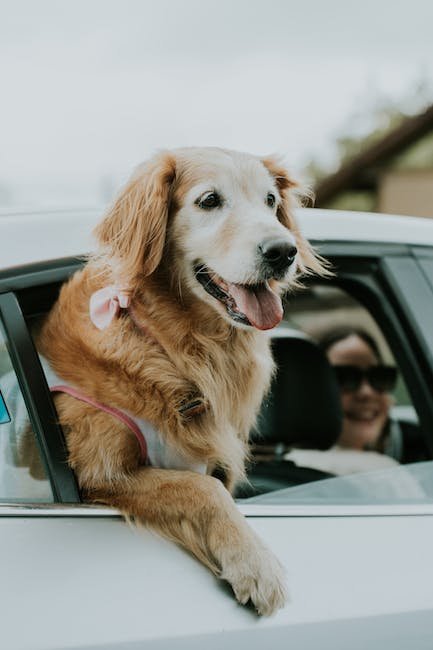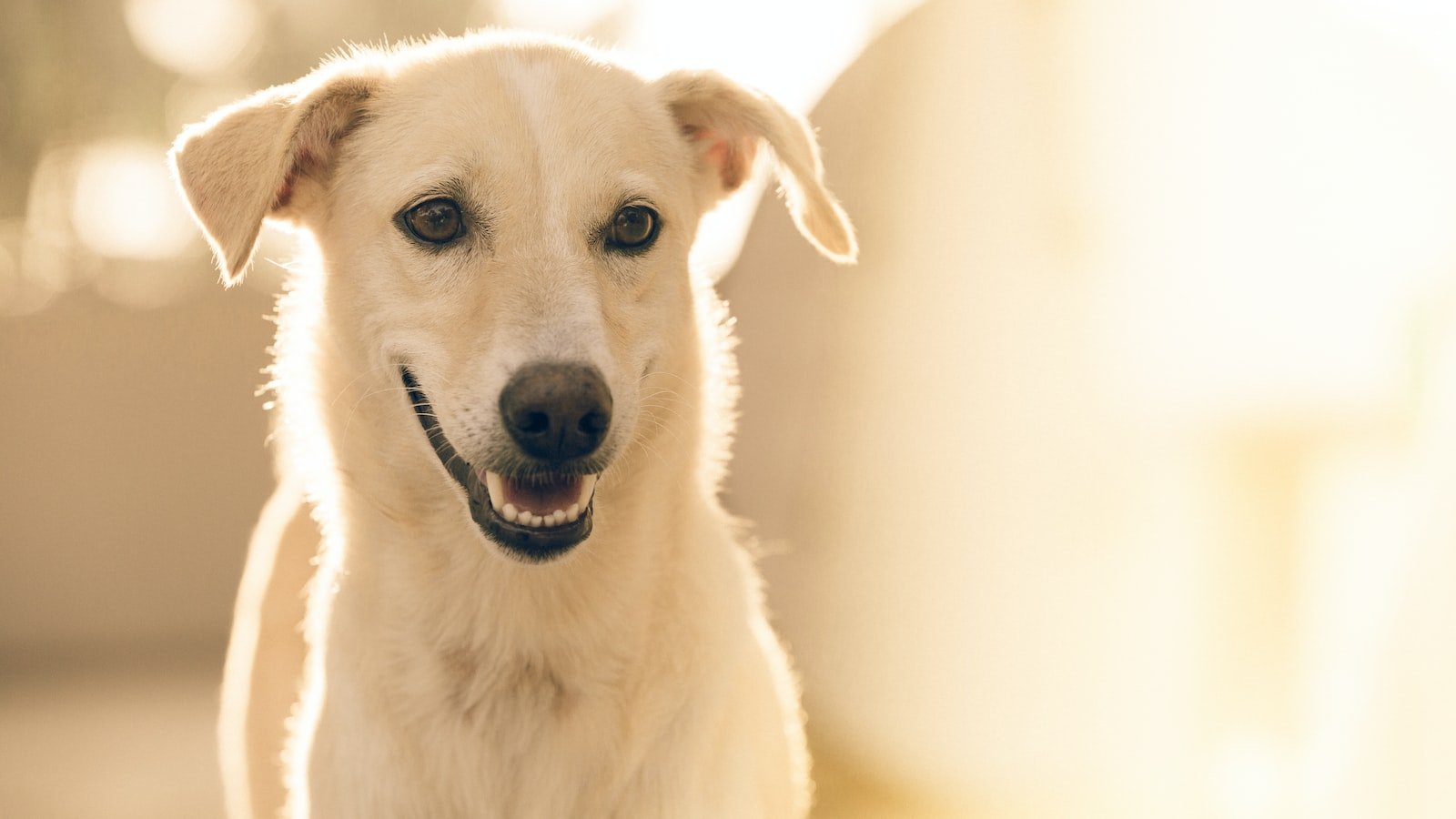A frenzied blur of fur and paws, your beloved canine companion takes off like a bolt of lightning, chasing after passing cars with wild abandon. Fear courses through your veins as you imagine the potential dangers that lie ahead. Your heart races, not only out of concern for your furry friend’s safety, but also from the frustration of repeatedly failing to break them of this hazardous habit. But fear not, for amidst this whirlwind of worry, there is hope. By understanding the underlying motivations behind your dog’s car chasing antics, implementing effective training techniques, and creating a safe and stimulating environment, you can finally put an end to this game of high-speed chase before tragedy strikes. In this article, we will delve deep into the mysterious world of car-chasing canines, revealing proven strategies to help you regain control and keep your furry companion safe from the allure of those fast-moving vehicles. So, buckle up and prepare for the ride ahead, as we embark on a journey to steer your dog away from danger and towards a lifetime of road safety.
Table of Contents
- Understanding the Root Cause of Your Dog’s Car Chasing Behavior
- Effective Trainings Techniques to Redirect Your Dog’s Attention Away from Cars
- Creating a Safe Environment: Tips for Preventing Car Chasing Situations
- Seeking Professional Help: When to Consider Hiring a Dog Behaviorist
- The Role of Consistency and Patience in Breaking the Habit of Car Chasing
- Q&A
- To Conclude

Understanding the Root Cause of Your Dog’s Car Chasing Behavior
Is your furry friend constantly racing after passing cars, leaving you puzzled and concerned? It’s crucial to delve into the root cause of this behavior in order to address it effectively. Car chasing can stem from various underlying reasons, some of which might surprise you.
1. Lack of exercise: Dogs need regular physical activity to release their pent-up energy. Without adequate exercise, they may resort to car chasing as a way to entertain themselves. Consider increasing your dog’s exercise routine, ensuring they get plenty of walks, playtime, and mental stimulation.
2. Prey drive instincts: Some breeds, such as sighthounds or herding dogs, have a strong innate prey drive. This instinct might trigger their car chasing behavior as they perceive moving vehicles as potential prey. Proper training and redirection techniques can help manage this natural urge.
3. Lack of training: Dogs that haven’t been taught proper recall or obedience commands may have difficulty resisting the temptation to chase cars. Training sessions focusing on commands like “come,” “stay,” and “leave it” are vital in curbing car chasing behavior.
4. Anxiety or fear: In some cases, car chasing can be a manifestation of anxiety or fear. Dogs may find comfort in the chase, diverting their attention from their worries. Identifying and addressing the underlying anxiety issues through behavioral therapy or professional guidance can help alleviate the car chasing behavior.
Remember, every dog is unique, and their car chasing behavior may have different roots. Patience, consistency, and a thorough understanding of your furry friend’s needs and instincts are key to modifying their behavior effectively. Consulting a professional dog trainer or behaviorist can provide valuable insights and guidance tailored specifically for your dog’s situation.

Effective Trainings Techniques to Redirect Your Dog’s Attention Away from Cars
Effective Training Techniques to Redirect Your Dog’s Attention Away from Cars
When it comes to ensuring the safety of your beloved furry friend, redirecting their attention away from cars is of utmost importance. By implementing effective training techniques, you can help your dog navigate the urban jungle without any unnecessary risks. Here are some valuable tips:
- Positive reinforcement: Utilize rewards such as treats, praise, and play to encourage desired behaviors, like maintaining focus on you instead of vehicles passing by. Consistently reward your dog for looking at you or responding to vocal commands, reinforcing the idea that paying attention to you is more rewarding than being preoccupied with cars.
- Engagement exercises: Engage your dog in interactive games or obedience training to boost their mental and physical stimulation. These activities not only divert their attention from cars but also strengthen the bond between you and your furry companion. Get creative with activities like hide-and-seek, recall training, or teaching new commands.
- Desensitization training: Gradually expose your dog to car-related stimuli, such as the sound of engines or the sight of passing vehicles. Start at a distance where your dog is comfortable and gradually decrease the distance over time, ensuring your dog remains calm and focused on you. Consistency and patience are key in desensitizing your dog and helping them overcome their fear or fascination with cars.
By incorporating these effective training techniques into your routine, you can redirect your dog’s attention away from cars, making walks safer and more enjoyable for both you and your loyal companion.

Creating a Safe Environment: Tips for Preventing Car Chasing Situations
When it comes to preventing car chasing situations, a proactive approach is key. By implementing a few simple strategies, you can ensure both the safety of your furry friend and the peace of mind for yourself. Here are some tips to help create a safe environment:
1. Secure Your Yard: Make sure your yard is properly fenced and secure. Maintain any weak spots or gaps to prevent your dog from escaping and chasing cars on the road.
2. Supervise Outdoor Time: When allowing your dog outside, always supervise their activities. Keep an eye on their behavior, especially if you live near busy streets. This way, you can intervene immediately if they show signs of car chasing tendencies.
3. Train Your Dog: Invest time in teaching your dog reliable recall and obedience commands. By practicing these regularly, you can redirect their attention away from cars and keep them focused on you. Seek professional training if needed.

Seeking Professional Help: When to Consider Hiring a Dog Behaviorist
Is your dog causing you constant frustration with their unruly behavior? Are you at your wit’s end trying to train them? It might be time to consider enlisting the help of a professional dog behaviorist. These experts have a deep understanding of canine behavior and can provide valuable insights and techniques to help you and your furry friend overcome any challenges you may be facing.
But when exactly should you consider hiring a dog behaviorist? Here are a few signs that it might be the right time to seek their expertise:
- Aggression: If your dog displays aggressive behavior towards people, other animals, or objects, it’s crucial to address this issue promptly. A dog behaviorist can evaluate the underlying causes of aggression and develop a tailored plan to manage and modify your dog’s behavior.
- Anxiety or Fear: Excessive fear or anxiety can greatly impact your dog’s overall well-being and quality of life. Professional dog behaviorists can help identify the triggers causing these emotions and work with you to desensitize and counter-condition your pup.
- Chronic Disobedience: Is your dog constantly ignoring commands or engaging in destructive behaviors? A dog behaviorist can help determine whether it’s a training issue or a deeper behavioral problem, providing you with effective strategies to establish clear boundaries and reinforce positive behaviors.
- Repetitive Behaviors: Some dogs exhibit repetitive behaviors such as excessive licking, tail chasing, or pacing. While these actions may seem harmless, they can indicate underlying anxiety or compulsive disorders. A behaviorist can assist in pinpointing the triggers and work towards redirecting these behaviors.
Remember, seeking professional help is not a sign of failure but a proactive step towards understanding and improving your dog’s behavior. With the expertise of a dog behaviorist, you can strengthen the bond with your furry companion and create a harmonious environment for both of you.
The Role of Consistency and Patience in Breaking the Habit of Car Chasing
When it comes to breaking the habit of car chasing in our furry friends, consistency and patience play a pivotal role. It’s important to remember that this behavior doesn’t change overnight and requires steadfast dedication. By implementing a consistent training routine, we can gradually redirect their focus and reinforce positive actions.
One effective method is to establish a clear set of commands. Using verbal cues like “stop,” “leave it,” or “stay” can help distract your dog from the urge to chase after passing vehicles. Consistent repetition of these commands will strengthen their association and establish boundaries. Additionally, incorporating visual aids, such as flags or markers, can further emphasize which areas are off-limits.
Patience is key throughout this journey. Understand that breaking the habit will take time and setbacks may occur. It’s important not to lose hope and remain patient with your furry companion. Consistency in training sessions, reinforcement of desired behaviors, and the use of positive reinforcements – like treats or praise – will gradually help them unlearn the chasing instinct and replace it with more appropriate actions.
Q&A
Q: Why is it important to stop your dog from chasing cars?
A: Chasing cars can be incredibly dangerous for both your dog and drivers on the road. It increases the risk of accidents and can result in serious injuries or fatalities. It’s crucial to keep your furry friend safe and prevent any potential harm.
Q: Why do dogs chase cars in the first place?
A: Dogs may chase cars out of natural instinct, curiosity, or boredom. Additionally, some dogs may exhibit this behavior as a result of fear or territorial instincts. Understanding the underlying reasons can help address the issue effectively.
Q: How can I prevent my dog from chasing cars?
A: Start by providing your dog with plenty of mental and physical stimulation to keep them occupied. Consider using positive reinforcement training to teach your dog basic obedience commands, such as “stay” or “leave it.” Additionally, it’s crucial to keep your dog leashed and ensure they have a secure and enclosed space to prevent any chasing temptation.
Q: What should I do if my dog starts to chase a car?
A: Stay calm and avoid chasing after your dog, as it may encourage them to continue. Instead, try using a loud and firm command to deter them, such as “stop” or “no.” It is essential to keep your dog’s safety in mind, so avoid putting yourself or others in danger while attempting to intervene.
Q: Can professional training help stop my dog from chasing cars?
A: Professional dog training can be beneficial in addressing the issue of chasing cars. Experienced trainers can help identify the underlying cause of the behavior and develop appropriate techniques to modify your dog’s behavior effectively. Seeking professional help can increase your chances of success in training your dog to stop chasing cars.
Q: Are there any tools or aids that can help prevent my dog from chasing cars?
A: Yes, there are various tools available in the market that can assist in preventing your dog from chasing cars. These include long lines or leashes for added control, anti-pull harnesses, or citronella spray collars that act as deterrents. However, always consult a professional trainer before using any tools to ensure they are suitable for your dog and the specific situation.
Q: How long will it take to stop my dog from chasing cars?
A: The time it takes to stop your dog from chasing cars may vary depending on multiple factors, such as your dog’s breed, age, temperament, and the consistency of training. While some dogs may respond quickly, others may take more time and patience. Remember, consistency, positive reinforcement, and understanding are key during the training process.
To Conclude
As we bring this article to a close, remember that the safety and well-being of our furry companions are in our hands. Learning how to curb our dogs’ instinct to chase cars is not only a matter of convenience, but also an essential step towards ensuring their happiness and longevity.
While it may seem like an insurmountable task, remember that patience, consistency, and love are your allies on this journey. By following the techniques we’ve discussed, you can gradually reshape your canine companion’s behavior and prevent them from endangering themselves or others on the road.
Remember, it’s crucial to create a safe and secure environment for your dog. Always keep them on a leash when outside, provide plenty of physical and mental exercise, and set clear boundaries to establish yourself as their trustworthy leader. Additionally, consider enlisting the help of a professional dog trainer or behaviorist to address any underlying issues that may contribute to their dangerous car-chasing habits.
Ultimately, cherishing the bond you share with your dog is at the heart of this endeavor. So, with determination in your stride and compassion in your heart, embrace this opportunity to guide your beloved canine companion towards a life filled with joy, safety, and contentment.
Let us embark on this transformative journey, hand in paw, and open a world of adventures where the sight of passing cars no longer sends our furry friends into a frenzy. Together, we can create a harmonious coexistence between dogs, their humans, and the ever-bustling streets that lie before us.
As an affiliate, my content may feature links to products I personally use and recommend. By taking action, like subscribing or making a purchase, you’ll be supporting my work and fueling my taco cravings at the same time. Win-win, right?
Want to read more? Check out our Affiliate Disclosure page.